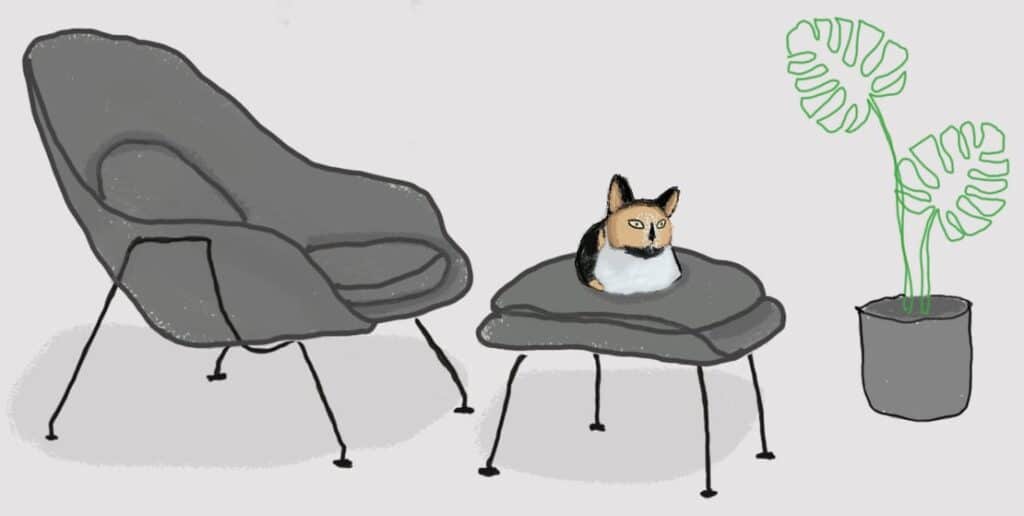
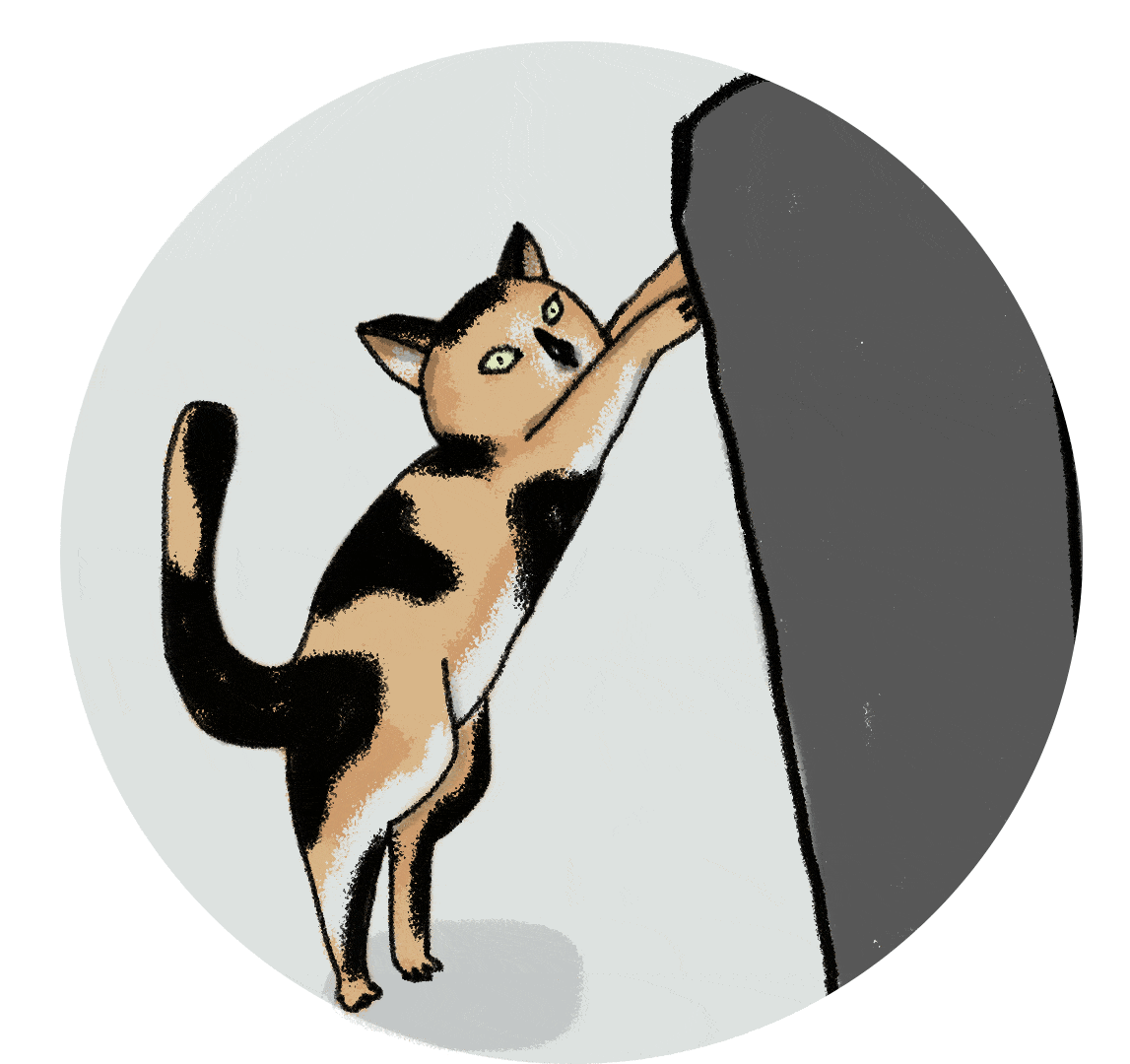
It is in the cats nature scratch, just as it is in their nature to clean and groom themselves regularly. So there is no point in fighting with your cat to stop them from scratching. What you need to do is instead provide them with places where they are allowed to scratch, also understand why they do it and where they prefer to do it. Here are the main reasons why cats scratch.
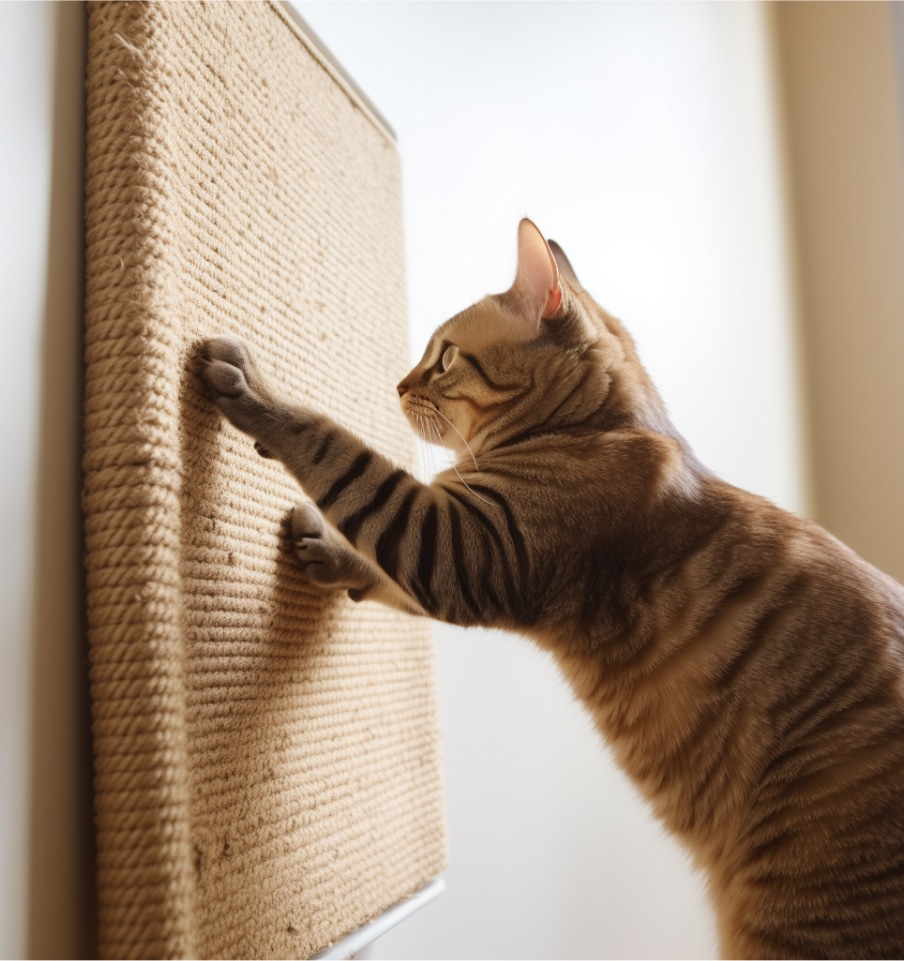
It is no coincidence that cats choose our favorite sofas to sharpen their claws. Cats are very territorial and since in their minds we live at their home, they will instinctively come to remind us that the sofa where we spend time is Their territory that they agree to share. This is one of the reasons why they hardly or never touch certain pieces of furniture while others are visited and scratched every day. If we rarely use a piece of furniture, then cats will not see much point in marking them and leaving their odors either.
Knowing this, if we install a dedicated scratching station to distract them from our sofa, we must place it where we live, where we often find ourselves in the house. No need to install it in a remote corner or in a place that we rarely visit. Your cat will not go either.

There are many repellents that seem to demonstrate good effectiveness in keeping cats away or in keeping them away from certain places or objects that we want to protect from their territory marking and scratching. They are classified into three main categories: natural repellents, mechanical repellents and ultrasound.
I will not elaborate further on the subject because many articles discuss these products and methods. You can refer to them if you want to know more about the subject. These are not recommendations of articles but rather examples of articles that can be found on the subject:
Since 2010, LUWISS has devoted a lot of effort and time to identify the best fabrics that offer resistance against cat claws. Several tests have been done and several products have been put to the test, hoping to one day find effective solutions and that day may finally be upon us.
Some fabrics demonstrate more effectiveness than others, either because of their texture, or because of their weaving (or felting) or because of their backing. But let’s be clear, this is not a foolproof science. What works for one may not work for another. Your cat’s personality can also make a clear difference in the equation. Some cats scratch often and always in the same place while others do it infrequently or have a circuit with several places where they scratch. The former risk creating shreds and holes, the latter will scatter their markings everywhere.
Also, and this is probably the most important, you have to provide them with one or more alternatives: a sacrificed piece of furniture, a scratching station, objects on which they can exercise. And you have to put them in the right place. Because no matter what the covering on your sofa is, if it’s the only place where they can sharpen their claws, a behavior which, I repeat, is a na-tu-ral need, then they’re going to do it anyway.
LUWISS used a very simple but formidable method to pre-test fabrics and know if they have the potential to resist the claws of our feline friends. Watch the video below to see the treatment that is made to the fabrics and to know if they pass the test or not. This method is not infallible, but it already gives a good idea of the resistance potential of a fabric.
Here are some observations and information on the different types of fabrics and their potential resistance to clawing.
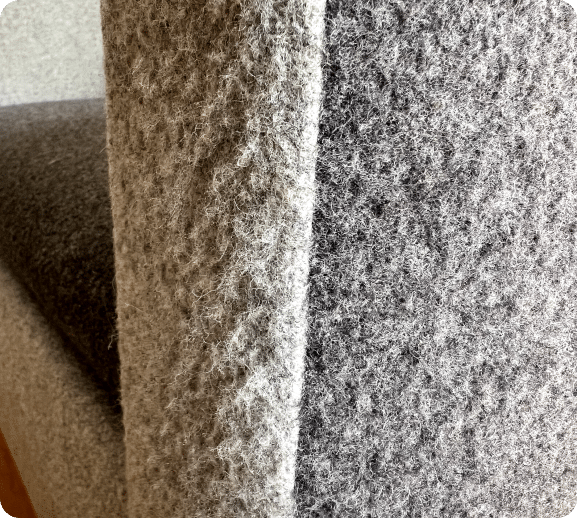
The big winner here is microfiber fabrics with a texture similar to suede. These textures offer little or no way for cats to sink their claws into them. Instead, the claws will slide over the surfaces, making them uninteresting to cats. Wool felt fabrics also offer good resistance, but here not because the texture is not appealing, but rather because wool fabric is not woven; it’s a felt. It is a fabric where the fibers are intertwined, mixed together to form the fabric. If they pull on it with their claws, the fabric will dull, but there will be no threads hanging down since there are none. See the effect this produces in the photo opposite.
A word of caution for suede fabrics as they tend to accumulate body fat (sebum), which forms a sort of patina over time, generally on the armrests and at the headrest, where the backrests allow the head to rest.
Synthetic velvets generally pass the tests well because some of these velvets are not woven like velvets made from natural fibres such as cotton and silk. Synthetic velvets are often full-surfaced with one side with small hairs and a smooth back. These are fabrics made from an emulsion. You can’t pull threads because they don’t have any. They are similar to suedes, but with a longer pile. Again, this is not a guarantee that cats won’t scratch them, but they have a better chance of resisting and lasting longer.
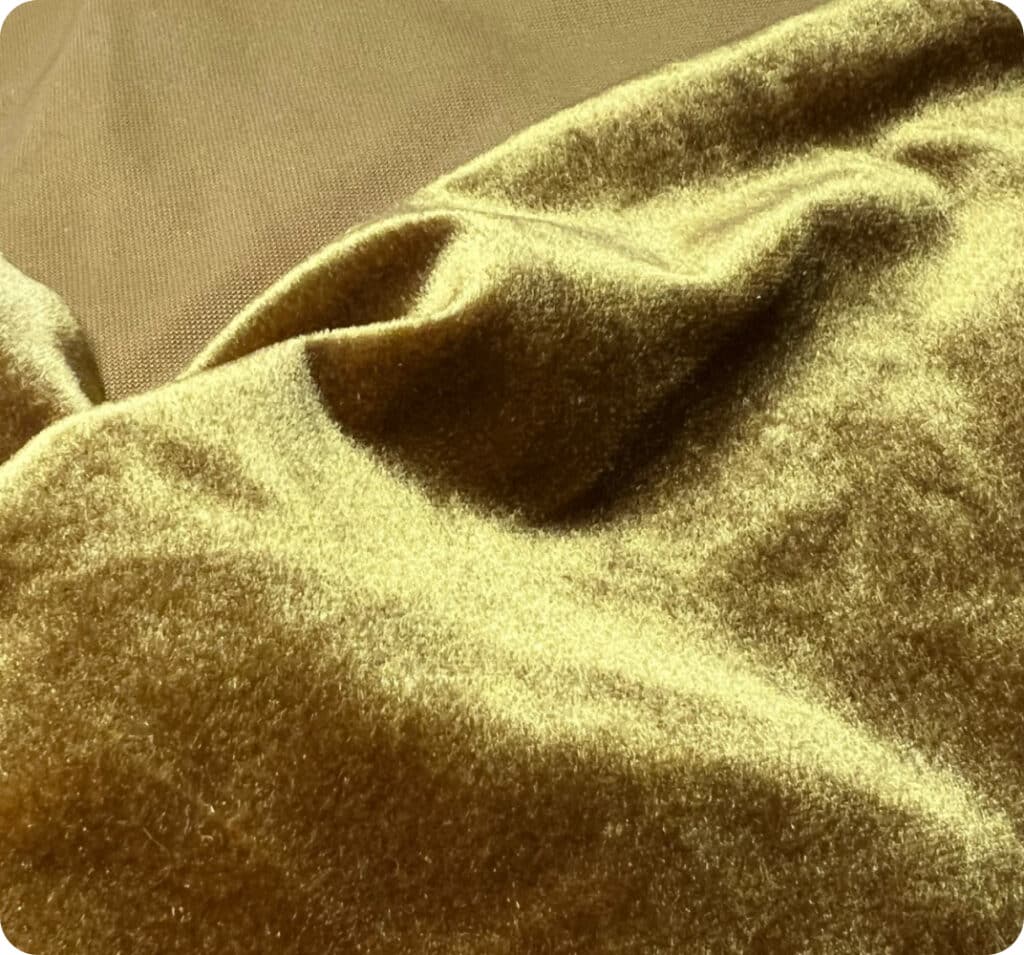
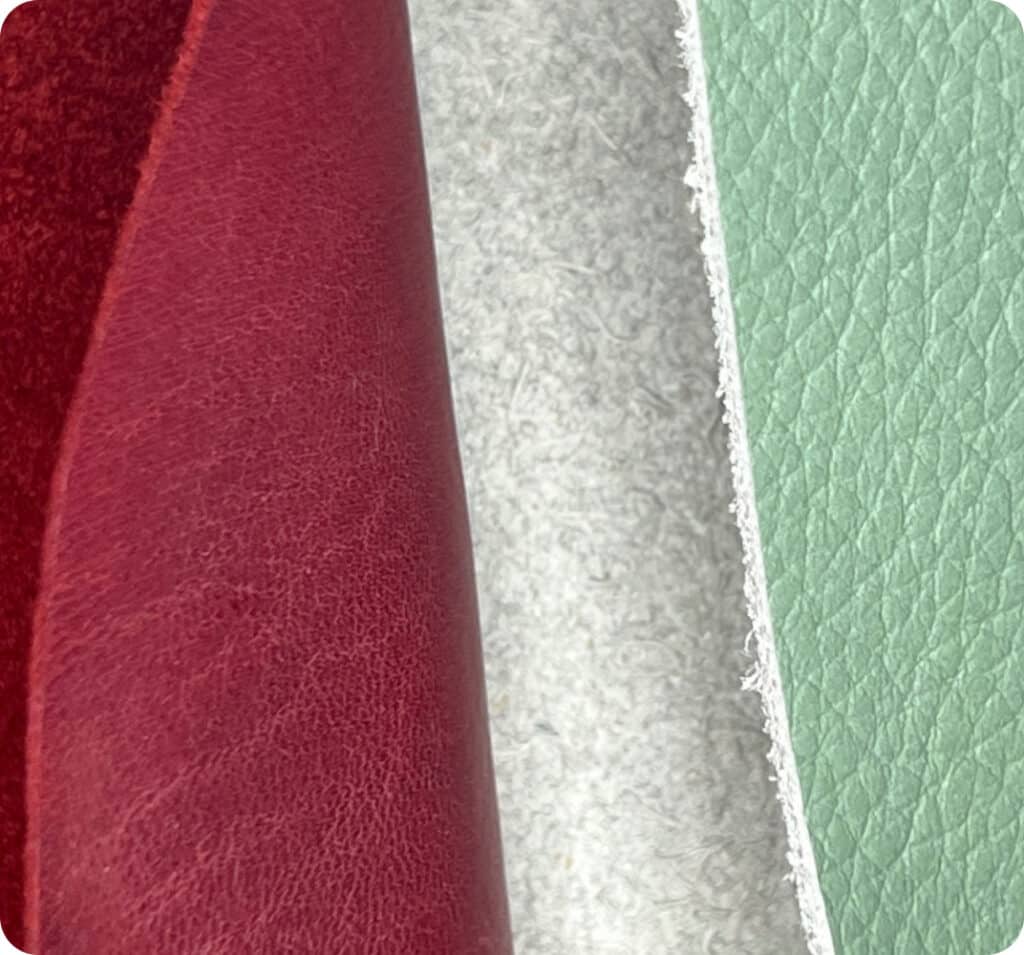
100% genuine leather (full grain or premium quality) also offers good resistance due to the little interest that cats have in it. But be careful, you must choose a leather dyed in full thickness (red leather on the left) and not dyed on the surface only (green leather on the right). This distinction is important because a leather dyed only on the surface can show signs of scratches simply by the fact that the cat walks on the covered furniture or plays with it. This also applies to us humans who can make snags with our clothes, keys, etc. Finally, leather is not a guarantee against scratching and clawing, especially if this is also the only covered furniture in the house and there is no scratching station available to them.
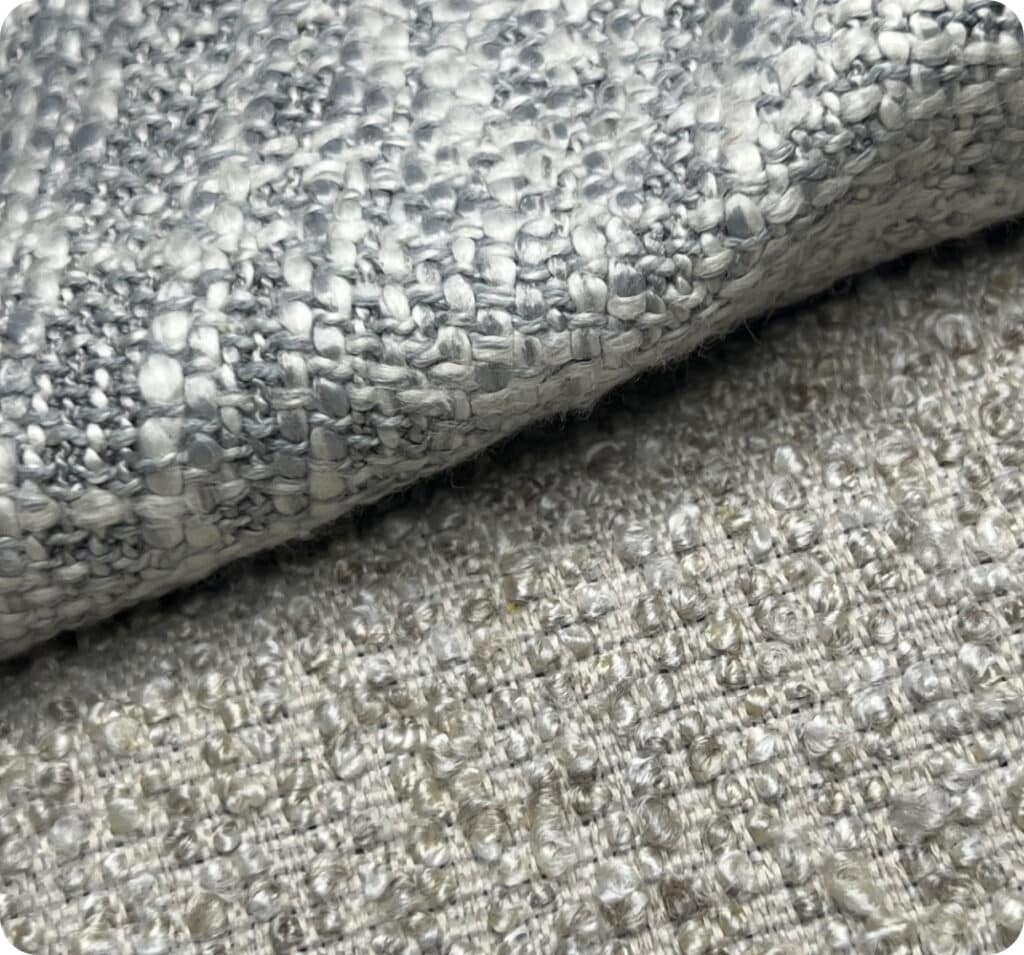
The big losers here are bouclé and chenille fabrics. They are like magnets for cats because they can cause a sensation similar to the texture of their mother’s belly when they were still nursing. This can trigger an instinctive reflex that is difficult to control or stop. Their weaves allow the claws to sink into the fibers and they offer no resistance. Threads will come out as soon as the first few scratches. Avoid if you have animals: cats, but also dogs.
Despite their smooth surface, cats can sink their claws into these plastic materials with a relatively soft surface. This will result mainly in scratches at first, but as time goes on, the perforations will become more apparent. Some vinyls will offer a better resistance, but there will be scratches on the surfaces overt time.
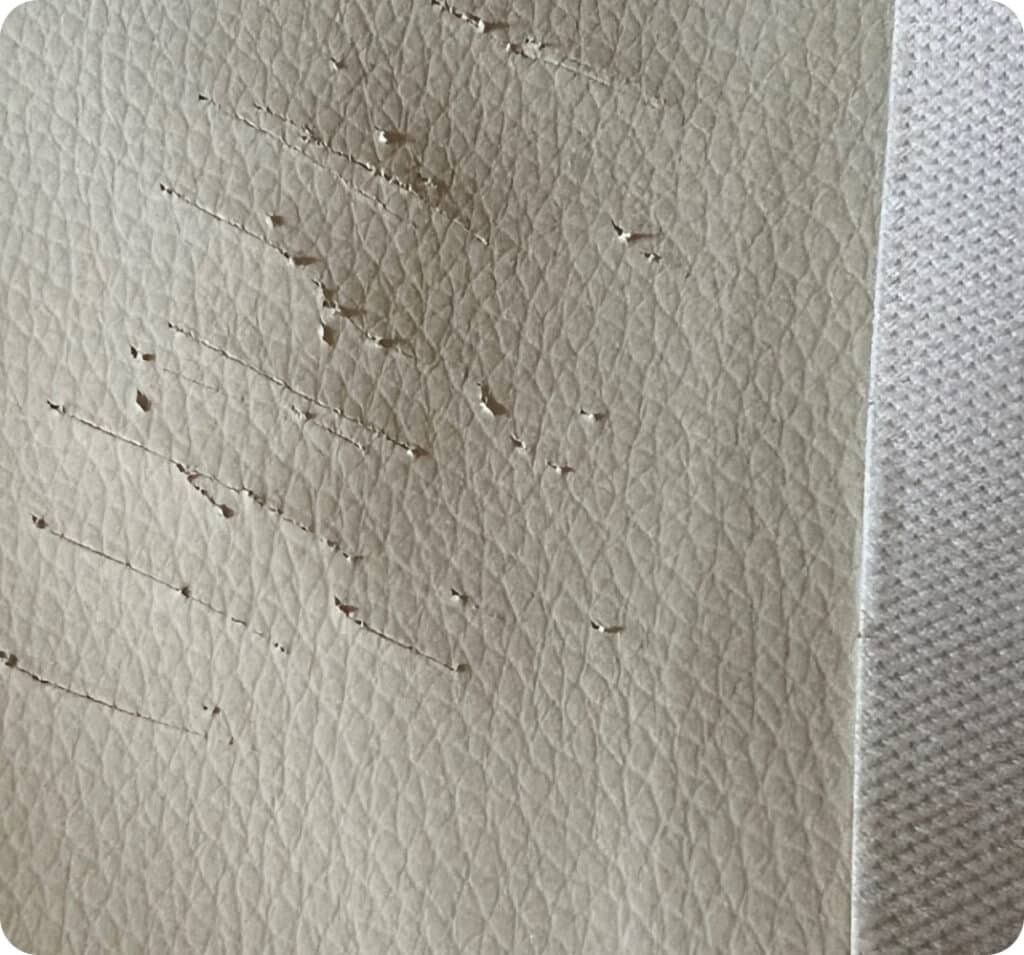
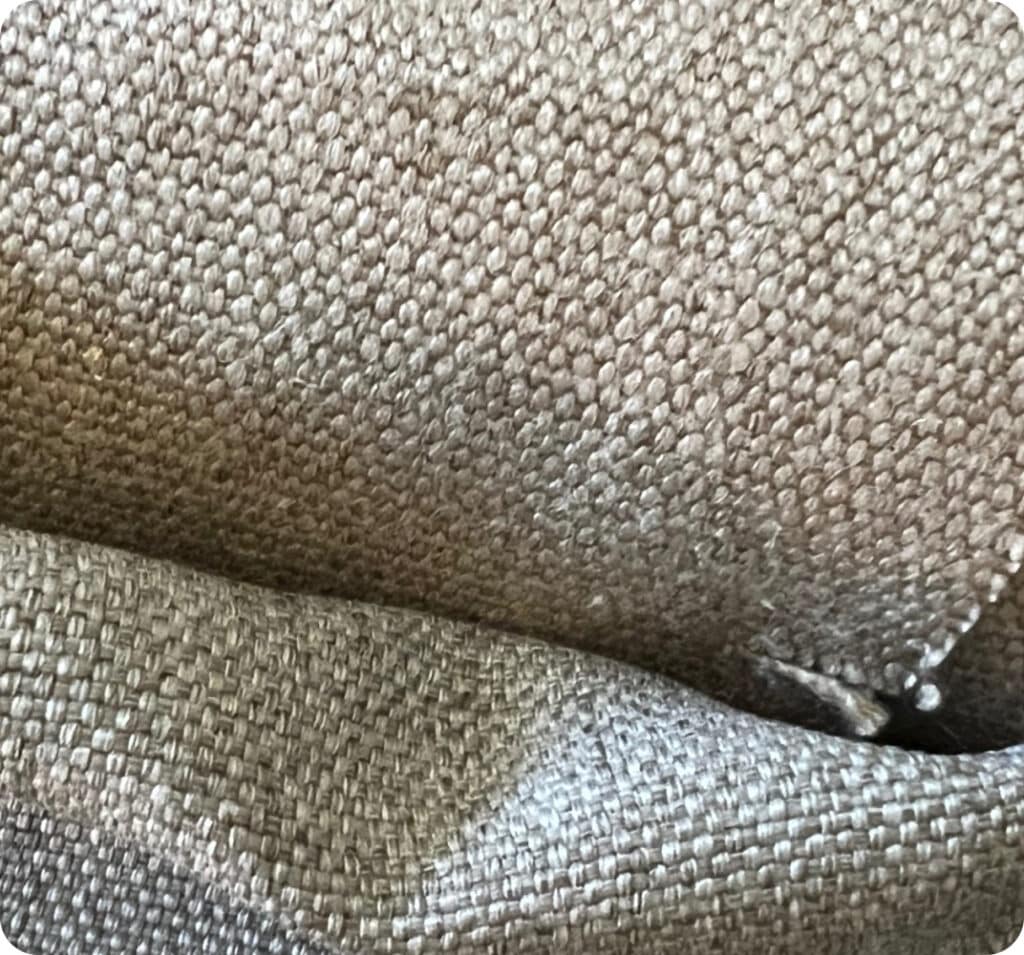
The last fabrics and coverings to avoid are those with a very soft and loose weave. Since the threads are somewhat spaced, cat claws can easily penetrate them, sometimes just by walking on these fabrics, without even wanting to scratch them. These can be more resistant when a backing has been glued to the back of the fabric, but this is not a guarantee of effectiveness, depending on the type of back gluing that can be found.
It seems that our sustained efforts to find a solution to protect fabrics from cat claws have paid off. Watch the video below. This is the same fabric that has been treated on one side (left) and untreated on the other side (right). You can see that the treated side is not 100% free of needle marks, but it resists much better than the untreated side where the threads come out and stay out from the first contact with the needle.
We still have to validate whether the treatment is as effective on other types of fabrics. Right away, this treatment will not work on leather, faux leather, imitation leather and other similar products. It is therefore necessary to validate beforehand with a sample to ensure that the treatment will work. It is therefore not the miraculous solution that we could have hoped to find. But between this option and nothing at all, it is already a step in the right direction for furniture designed for a harmonious life together with our feline companions.
Here are the most frequently asked questions about cat resistant fabrics.
The answer is no.
Cats are very territorial and scratching is a way for them to mark their territory. They are willing to share their space, but they will regularly remind us that they are at home by scratching objects that we use often. If we use them regularly, our sofas, armchairs and other upholstered and covered furniture are the perfect places for them to remind us.
If we never or rarely go to a place in the house, our cat will not go there to scratch. They will prefer the places where we live. It is therefore recommended to install a scratching station or stations where it is most often present in our house.
Finally, and this is often what makes our sofas so attractive to our cats, they will try to scratch stable objects that will not move when they are busy. For example, you won’t see your cat scratching on a rocking chair. There needs to be strength and stability. Unfortunately, our sofas are ideal for meeting these criteria.
There are many repellents that seem to demonstrate good effectiveness in keeping cats away or in keeping them away from certain places or objects that we want to protect from their territory marking and scratching. They are classified into three main categories: natural repellents, mechanical repellents and ultrasound.
I will not elaborate further on the subject because many articles discuss these products and methods. You can refer to them if you want to know more about the subject. These are not recommendations of articles but rather examples of articles that can be found on the subject:
The big winners are suede or microfiber fabrics. These fabrics do not allow cats to sink their claws into them and make them less interesting.
Wool felts also offer good resistance, but especially because it is not a weave but a fabric made of intertwined fibers. The fabrics will become blunt on the surface, but there will be no dangling threads. Wool resists even better with the treatment proposed by LUWISS.
Another category of fabrics that resists well is velvet, especially velvets made of synthetic fibers. This is often in fact an imitation of velvet on the surface, but they are often produced by an emulsion effect. These are not woven fabrics. Cats cannot pull any threads on them since there is none.
The big losers are looped and chenille fabrics. Their weaves are perfect scratching surfaces since they allow cats to easily sink their claws into them, plus cats love these textures that can even trigger their instinctive reflex.
Faux leathers, imitation leathers, and vinyls also don’t have a good rating. Their surfaces can scratch easily, even if cats just walk or play on them.
Fabrics with a loose, uneven, or loose weave are also not recommended. It’s too easy for cats to sink their claws into them and pull threads.
Unless there are metal or glass objects, if a cat spends every day in the same place on a sofa, it will end up going through the fabric: treated or not. So, the miracle treatment or the miracle fabric will probably never exist.
But LUWISS now offers a treatment that reduces the impact of scratching on the fabrics of our sofas. Not all fabrics can receive this treatment, so you have to check before choosing it. But, for the fabrics that can receive it, there is a clear difference between a fabric that has been treated and one that has not.
The treatment has only been tested for 2 years. So you have to be realistic about its potential, but to date, it is rather conclusive. Watch the video above to get an idea of the difference it can make in keeping our sofas in better condition for longer.
This treatment is currently reserved for our customers who request it. If our tests continue to give good results, it could be offered with the purchase of our fabrics which will have been specially selected.
If you have any further questions or would like more information, please visit the Contact page.